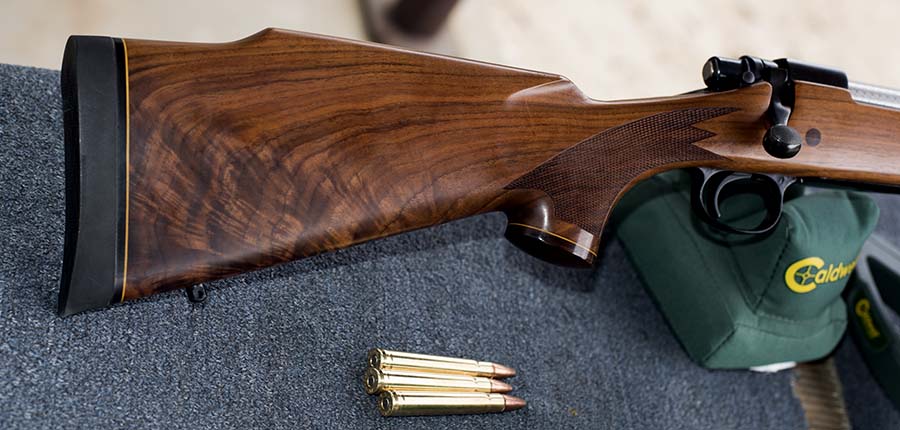As the title implies, there’s nothing quite like the plaintive wail of a high performance motorcycle. If you’re good enough, you can identify specific bikes just by (dare we say it) their ExhaustNotes. Harleys have their distinctive rumble, a ’60s Triumph Bonneville sounds like raw power, the Ducati dry clutch rattle, you get the idea. Do you think you know motors? Hey, see if you can identify this one before you see it…
Category: Amazon
A couple of cool videos…
Two cool videos are making waves this week. One is a recent release by my good buddy Buffalo Bonker about his recent ride across Iowa on his RX3…
I met Buffalo on one of the CSC Baja rides, and the guy is a hoot. He bought the RX3 to go on the Baja ride (he had never ridden a motorcycle before), and since then he’s completed a number of great adventures, including a ride through Vietnam. Most impressive, and thanks for allowing us to share your video here on the ExNotes blog, Buffalo!
The other video of note is good buddy Joe Gresh’s review of the Royal Enfield Interceptor, which continues to rack up the views…
Joe Gresh has a number of outstanding videos, and it you’d like to see more, just drift on over to our YouTubby page! We’ve just updated our video page, with more videos and better organization to make things easier to find. We have shooting videos, riding videos, motorcycle reviews, and more. Enjoy!
Hey, you know what? We think you should sign up for our email updates, and you can do so by adding your email address to the widget on this page. We’ll never give your email address to anyone else, and you’ll automatically be entered to win a copy of Destinations, our latest moto adventure book!
Ascot AMA Nationals
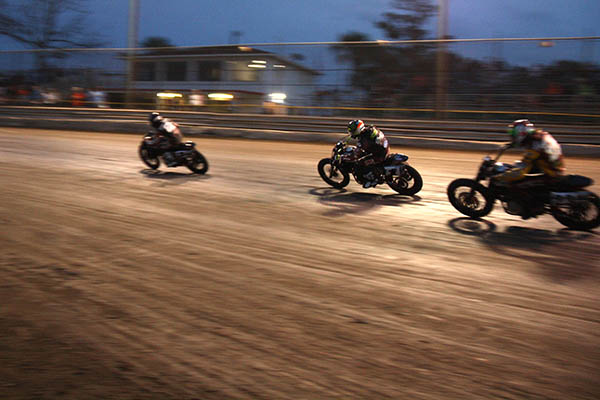 In San Diego I lived across the street from a Safeway food market. Man, I never ran out of anything. That Safeway is now a West Marine boat supply store. They got nothing to eat in the whole damn place. But back then, around 1980, it was a great food source.
In San Diego I lived across the street from a Safeway food market. Man, I never ran out of anything. That Safeway is now a West Marine boat supply store. They got nothing to eat in the whole damn place. But back then, around 1980, it was a great food source.
In my pad I had a tiny refrigerator with one of those wine-in-a-carton things inside. My buddy Mark found it in the road, not far from the house. Nobody I knew drank wine, or at least that wine. There was a perforated cardboard section that you knocked out and inside was a hose that connected to the plastic sack of wine. It was practical as hell, like a battery acid container. The hose had a shut off thingy, you kind of rolled the shut off onto a ramp until it pinched the hose closed. The wine tasted bad. Maybe it got hot in the sun out in the street. No telling how long it was there before Mark found it. Whenever anyone would drop by I’d ask if they wanted some wine, that’s what adults do. It was still in the fridge a few years later when I moved away.
I’d leave my one bedroom, one bath rental house on Point Loma’s Locust Street around 5pm. My bike was a 1968 electric-start XLH Sportster converted to kick start. Because electric kickers are for Honda riders, man. From Point Loma I’d reel onto Interstate 5 and roll the throttle on, lane splitting for 15 miles to Gene’s house in Mira Mesa. Back then every subdivision in San Diego sounded like one of the wooden sailing ships that discovered America: The Nina, The Rancho Bernardo and The Santa Antiqua. I guess they still name California things that way. Streets are Calles or Avenidas. Townhouses are called Don Coryells, after a football coach.
Gene had a 1973 Sportster, the one with the crude looking steel bar bent into a U-shape to secure the top shock absorber mounts. The result of AMF cost cutting. My older Sporty had a beautiful cast part welded into the frame tubes performing the same function. You couldn’t see either one once the seat was installed but I knew it was there. Gene knew it too. Gene was my wing man, my BFF. We used to drink in bars and shoot pool after work. It was nothing to stay up late at night, I only needed a few hours sleep. In those years Harley-Davidson motorcycles had a terrible reputation. Their riders were no prize either. We liked the way the bikes sounded and the way they looked.
California traffic was just as bad in 1980 as is today. We lane split all the way to Oceanside where the northbound traffic would thin out for 30 miles or so then lane split to the 405 and past the “Go See Cal” auto dealership. Cal’s dog Spot was a lion. He was featured in Worthington Ford television ads. It was nerve wracking bumper to bumper riding all the way til dusk and the exit for Ascot park Raceway.
I saw my first Ducati Darmah in the parking lot at Ascot. It was the most beautiful bike I’d ever seen. The squared off crankcases were works of art. Our iron-head Harleys looked like civil war relics next to the Darmah. Like Genus Rattus, man. I didn’t envy the Ducati. I was still a hard core Harley guy. Pretty don’t mean nuttin’ to us. Fast, reliable motorcycles are for the weak. I still feel that way.
I may have this wrong but Ascot held two AMA Grand National races each year. Every race I went to was advertised as the final race because the track was closing to be sold. This went on for 12 years until the track really did sell. One National was a standard flat track race and one National was a TT, which is a standard FT track with a bump and a right hand turn. Usually by the time Gene and I got up there the heat races had already started.
Ascot wore its years well. The stands were uncomfortable and crowded. AMA Nationals are big deals. The restrooms were dungeons. We would eat bad food and drink beer and watch the best racing anywhere until 11pm at night. Being part of the hundreds of motorcycles leaving Ascot was a real thrill. The riders were fired up from the racing and we rolled it on to 405 and then 5 to the El Toro Road exit and the Bob’s Big Boy restaurant. Bob’s was a tradition for AMA Nationals. The burgers were small and nearly tasteless, the little triangle salads were frozen and the fries were thin as shim stock. Bob’s was a good place to feed your Genus Rattus.
Because we were riding so late, no matter what the time of year it was always cold on the way home from Ascot. Long, empty stretches of interstate 5 stuffed each gap in your leather jacket with a chilling, low hanging fog. The cold would quiet your mind. Focus on your breathing now, keep still, those iron engines loved the cold. I could see Gene’s Sportster chuffing away in the dark, tiny glints of chrome primary case flashed in sync with my wobbling headlight. Both our Sportsters ran straight pipes and Interstate 5 sounded like the back straight of Ascot. Except we never chopped the throttle.
South of La Jolla the air temperature would rise and dropping off 5 onto Rosecrans Street wrapped sea-warmth around my body. I loved that part of the ride. The shivering was over, I could smell ocean smells. My muscles relaxed. This early in the morning Rosecrans is deserted, I have to run the red lights because the sensors in the pavement cannot pick up motorcycles. The only sound is my 900cc Sportster slowly rowing through the gearbox, rumbling home.
Making Scents of things..
I started writing this bit thinking that I had a good idea for a series of men’s colognes. Then I realized: In my entire 68+ years on this planet, I’ve never used cologne, and I can’t remember hanging around any guys who ever did. So I started thinking…my thoughts for this blog hovered around aromas I enjoy, so maybe these should be women’s colognes. Whatever. There’s a request at the end: We’d like to know your thoughts, too. Got any suggestions?
 In-N-Out. I can’t drive by an In-N-Out Burger during business hours without inhaling that delightfully inviting aroma of grilled onions, beef, French fries, and the other good things the In-N-Out folks have assembled into what is unquestionably the best meal in town. And every time I do, I have to fight the temptation to pull in and get an Animal Style burger. A perfume capturing this fragrance might be the best advertising for In-N-Out ever. It would drive me nuts. Here’s my vote for the name: Oil of In-N-Out. Or maybe Eau de In-N-Out. Whaddaya think?
In-N-Out. I can’t drive by an In-N-Out Burger during business hours without inhaling that delightfully inviting aroma of grilled onions, beef, French fries, and the other good things the In-N-Out folks have assembled into what is unquestionably the best meal in town. And every time I do, I have to fight the temptation to pull in and get an Animal Style burger. A perfume capturing this fragrance might be the best advertising for In-N-Out ever. It would drive me nuts. Here’s my vote for the name: Oil of In-N-Out. Or maybe Eau de In-N-Out. Whaddaya think?
 WD-40. Ah, another great fragrance. It actually stands for Water Displacement No. 40, and that’s because it’s the 40th formulation the WD-40 company tried before they arrived at the perfect compound for displacing water, acting as a lubricant (no emails, please; I know it’s not a replacement for gun oil), a cleaner, and Lord only knows what else. WD-40 is the kiss of death around any kind of epoxy bonding, soldering, or welding operation (in fact, many of my failure analysis activities centered on getting WD-40 out of high-tech cleanroom environments), but it’s perfect for just about anything else. And, as is the point of this blog, it smells good. It would make a great perfume, I think. WD-40 is a silicone-based lubricant, so somehow silicone has to figure into the name. Help me out here, folks!
WD-40. Ah, another great fragrance. It actually stands for Water Displacement No. 40, and that’s because it’s the 40th formulation the WD-40 company tried before they arrived at the perfect compound for displacing water, acting as a lubricant (no emails, please; I know it’s not a replacement for gun oil), a cleaner, and Lord only knows what else. WD-40 is the kiss of death around any kind of epoxy bonding, soldering, or welding operation (in fact, many of my failure analysis activities centered on getting WD-40 out of high-tech cleanroom environments), but it’s perfect for just about anything else. And, as is the point of this blog, it smells good. It would make a great perfume, I think. WD-40 is a silicone-based lubricant, so somehow silicone has to figure into the name. Help me out here, folks!
 Sausage and Peppers. This has got to be another classic aroma. Who has ever smelled sausage and peppers (maybe with a little onion thrown in) on the grill without getting hungry? I love that smell and I find it inviting. As a cologne? Yeah, it would work. I don’t know that I could get Sue to use it, but ladies, take my word on this….that aroma works. The only problem might be finding the right name. Maybe we could go Italian and call it Salcicci y Peperoni, you know, to give it a Continental flair. Yeah, that could work. Salcicci y Peperoni, sold in fine stores everywhere.
Sausage and Peppers. This has got to be another classic aroma. Who has ever smelled sausage and peppers (maybe with a little onion thrown in) on the grill without getting hungry? I love that smell and I find it inviting. As a cologne? Yeah, it would work. I don’t know that I could get Sue to use it, but ladies, take my word on this….that aroma works. The only problem might be finding the right name. Maybe we could go Italian and call it Salcicci y Peperoni, you know, to give it a Continental flair. Yeah, that could work. Salcicci y Peperoni, sold in fine stores everywhere.
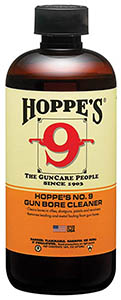 Hoppes No. 9. I love that smell. I would probably have become a gun nut even if I wasn’t fascinated by guns just to have a reason to use Hoppes No. 9. It hints of good times past and present, and it’s an aroma that reaches back decades. If there are any perfume or cologne companies out there reading this, pay attention to this one, folks. You don’t need to spend big bucks on market studies or focus groups…I’m telling you, this is the one. All I ask is that if you bring a Hoppes cologne to market, tell me about it a few weeks before you do. I’ll buy as many shares of your stock as I can. Eau de Hoppes. That’s great. Oh, yeah, I’ve used the Eau de thing already for In-N-Out. Here’s one that’s even better: Love Potion No. 9. I can hear the advertising jingle already.
Hoppes No. 9. I love that smell. I would probably have become a gun nut even if I wasn’t fascinated by guns just to have a reason to use Hoppes No. 9. It hints of good times past and present, and it’s an aroma that reaches back decades. If there are any perfume or cologne companies out there reading this, pay attention to this one, folks. You don’t need to spend big bucks on market studies or focus groups…I’m telling you, this is the one. All I ask is that if you bring a Hoppes cologne to market, tell me about it a few weeks before you do. I’ll buy as many shares of your stock as I can. Eau de Hoppes. That’s great. Oh, yeah, I’ve used the Eau de thing already for In-N-Out. Here’s one that’s even better: Love Potion No. 9. I can hear the advertising jingle already.
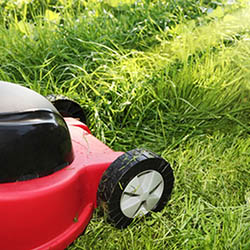 Fresh Cut Grass and Gasoline. This is a weird one, but it works. I’m remembering east coast summer evenings when I had to mow the grass back on the ranch. The smell of gasoline and fresh cut grass somehow just works. Maybe it’s because of the memories I have of those pleasant New Jersey summer evenings, fireflies, and mowing the lawn. The trick was to wait until well after dinner when things cooled off, and to start early enough to get the whole thing done before it got too dark. To twist a phrase from Robert Duvall, I love the smell of gasoline and fresh cut grass in the evening. I’m having a bit of a problem coming up with a catchy name, though. Any suggestions?
Fresh Cut Grass and Gasoline. This is a weird one, but it works. I’m remembering east coast summer evenings when I had to mow the grass back on the ranch. The smell of gasoline and fresh cut grass somehow just works. Maybe it’s because of the memories I have of those pleasant New Jersey summer evenings, fireflies, and mowing the lawn. The trick was to wait until well after dinner when things cooled off, and to start early enough to get the whole thing done before it got too dark. To twist a phrase from Robert Duvall, I love the smell of gasoline and fresh cut grass in the evening. I’m having a bit of a problem coming up with a catchy name, though. Any suggestions?
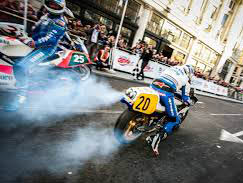 Two Stroke Exhaust. I already have the perfect name for this one: Blue Smoke. I think it’s perfect. Admittedly, it would have to be an acquired taste; folks either love that smell or they hate it. I’m in the former camp. I’ve only ever had one ring-dinger my entire life, but I remember going to the half-mile dirt track races when the 250s were running, and in those days, the 250s were all ring-dingers. You could smell the exhaust as soon as you entered the parking lot outside the stadium back then, and it was exciting. It promised good things to come. Yeah, this could work.
Two Stroke Exhaust. I already have the perfect name for this one: Blue Smoke. I think it’s perfect. Admittedly, it would have to be an acquired taste; folks either love that smell or they hate it. I’m in the former camp. I’ve only ever had one ring-dinger my entire life, but I remember going to the half-mile dirt track races when the 250s were running, and in those days, the 250s were all ring-dingers. You could smell the exhaust as soon as you entered the parking lot outside the stadium back then, and it was exciting. It promised good things to come. Yeah, this could work.
 Bacon. Hey, who doesn’t like bacon? The challenge here is a name that doesn’t make the person wearing it sound like a porker. Hmmm. The Italian word for bacon is, well, bacon. And the Italian word for lard is lardo. Nope, neither one of those will work. Ah, but the Spanish. Bacon becomes tocino. I can hear it now. Adorn yourself with the gentle yet intoxicating and inviting fragrance of Tocino. Indeed, that works well.
Bacon. Hey, who doesn’t like bacon? The challenge here is a name that doesn’t make the person wearing it sound like a porker. Hmmm. The Italian word for bacon is, well, bacon. And the Italian word for lard is lardo. Nope, neither one of those will work. Ah, but the Spanish. Bacon becomes tocino. I can hear it now. Adorn yourself with the gentle yet intoxicating and inviting fragrance of Tocino. Indeed, that works well.
 Chili. This one is a maybe. Personally, I love the aroma of a well-seasoned chili, especially if it’s done in a slow cooker and the flavor fills the house. It could be beef, venison, a decent cut of wild boar, elk, whatever. The meat is almost secondary to making a great chili. Red chili flakes, tomatoes, onions, Anaheim chili peppers, and cumin. Cumin’s the thing that makes a good chili great. Maybe that could be the name. Cumin. Yeah, I like it. Cumin. Put a little spice in your life. What do you think?
Chili. This one is a maybe. Personally, I love the aroma of a well-seasoned chili, especially if it’s done in a slow cooker and the flavor fills the house. It could be beef, venison, a decent cut of wild boar, elk, whatever. The meat is almost secondary to making a great chili. Red chili flakes, tomatoes, onions, Anaheim chili peppers, and cumin. Cumin’s the thing that makes a good chili great. Maybe that could be the name. Cumin. Yeah, I like it. Cumin. Put a little spice in your life. What do you think?
 Coffee. The best coffee in the world comes from Puerto Rico. If you don’t believe me on this, I don’t care. I know. Two Popes ago, Pope John (that’s right, the guy in the Vatican) used to send his jet to Puerto Rico regularly to pick up coffee. I’ve been in Colombia, and while their coffee is good, it’s not Puerto Rican coffee (no offense, Juan Valdez). But any coffee will do first thing in the morning (even Gresh’s powdered Nescafe), and I think everyone can agree (regardless of where you fall on the political or geographic spectrum) that a strong coffee fragrance early in the morning has to be one of the best aromas on the planet. They wouldn’t make coffee-flavored ice cream if coffee wasn’t a good idea. And (get this) if you came out with a coffee perfume, the distribution network is already in place. It’s called Starbucks.
Coffee. The best coffee in the world comes from Puerto Rico. If you don’t believe me on this, I don’t care. I know. Two Popes ago, Pope John (that’s right, the guy in the Vatican) used to send his jet to Puerto Rico regularly to pick up coffee. I’ve been in Colombia, and while their coffee is good, it’s not Puerto Rican coffee (no offense, Juan Valdez). But any coffee will do first thing in the morning (even Gresh’s powdered Nescafe), and I think everyone can agree (regardless of where you fall on the political or geographic spectrum) that a strong coffee fragrance early in the morning has to be one of the best aromas on the planet. They wouldn’t make coffee-flavored ice cream if coffee wasn’t a good idea. And (get this) if you came out with a coffee perfume, the distribution network is already in place. It’s called Starbucks.
So there you have it. Did I miss any? Hey, let me know in the comments section below. Operators are standing by…
Dropped bikes…
This is a blog I wrote maybe 15 years ago for a friend who dropped a very expensive motorcycle while putting it on the sidestand. He was really upset with himself and I thought he might enjoy hearing about the times I dropped my bikes. I stopped writing after the fifth or sixth memory because I was laughing so hard I thought I might hurt myself. This particular blog has made the rounds…it’s been on my original photosite (motofoto.cc, which went by the wayside a long time ago), and the CSC Motorcycles blog, and now this one.
So, here goes….
Drop Number 1 – Impromptu Stargazing
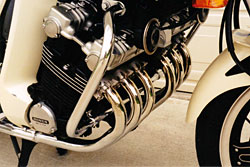 My friend Louie and I were wrapping up a hard 500-mile day through Arizona back in the 1990s. I know what you are thinking….500 miles is not that much for a solid day’s riding, but it was brutally hot in the way that only Arizona can be in the summertime. I was on my vintage Honda CBX and Lou was on his Gold Wing. We stopped for gas and Louis filled up first. While I was filling up the CBX, Lou rode over to the air hose to top off his tires. I filled my tank, fired up the CBX, and rode over to Lou, paralleling the sidewalk. I put my kickstand down and started to lean the CBX over.
My friend Louie and I were wrapping up a hard 500-mile day through Arizona back in the 1990s. I know what you are thinking….500 miles is not that much for a solid day’s riding, but it was brutally hot in the way that only Arizona can be in the summertime. I was on my vintage Honda CBX and Lou was on his Gold Wing. We stopped for gas and Louis filled up first. While I was filling up the CBX, Lou rode over to the air hose to top off his tires. I filled my tank, fired up the CBX, and rode over to Lou, paralleling the sidewalk. I put my kickstand down and started to lean the CBX over.
The next thing I knew I was staring at the stars. I had no idea what happened for a few seconds, and then I realized: I had fallen off my motorcycle, and I was laying on my back looking up at the evening sky!
The first thought that went through my mind was: “Did anyone see me do this?”
I hadn’t even been drinking! How could that have happened?
Well, what happened was this: When I extended the sidestand, the sidestand hit the curb before it fully extended and it didn’t go all the way forward. And then, when I leaned the CBX over, it just kept on going.
Total damage? One turn signal lens cover, one scratched fairing, and lots of lost pride.
Drop Number 2 – Lock-to-Lock Has Meaning
 This time, I was easing into my own driveway on my 2-week-old Suzuki TL1000S. Gorgeous bike. Bright red. A real rocketship. As I made the sharp turn into the driveway, I turned the forks to keep my balance. Lock-to-lock turning (you know, how far you can push the bars from one side to the other) on the Suzuki is waaaay less than any motorcycle I had ever ridden. And as it turns out (pardon the pun), that really makes a difference when you’re trying to balance a bike at low speeds.
This time, I was easing into my own driveway on my 2-week-old Suzuki TL1000S. Gorgeous bike. Bright red. A real rocketship. As I made the sharp turn into the driveway, I turned the forks to keep my balance. Lock-to-lock turning (you know, how far you can push the bars from one side to the other) on the Suzuki is waaaay less than any motorcycle I had ever ridden. And as it turns out (pardon the pun), that really makes a difference when you’re trying to balance a bike at low speeds.
The bottom line? I couldn’t turn the bars far enough to keep my balance at low speed.
The results? BAM! Suddenly, the TL and I were both on our sides in my own driveway!
The first thought that went through my mind was “Did anyone see me do this?”
Total damage? One scratched fairing and lots of lost pride. Lots and lots of lost pride.
Drop Number 3 – Them Darn Sidestands Again
A couple of weeks after Drop Number 2, I was letting my now 4-week-old, slightly-scratched TL1000S warm up in the driveway. The bike was on its sidestand, facing south. Just past my garage door, the driveway slopes down ever so slightly. Really slightly. I mean, hardly any slope at all. Out of the corner of my eye, I thought I saw the Suzuki move forward a bit. Nah, I thought, it’s gotta be an optical illusion.
Two seconds later: BAM! The Suzuki was on its side!
Wow, I thought, this thing sure likes laying down in my driveway.
My next thought: “Did anyone see me do this?”
The results? I couldn’t tell. The fairing was scratched, but maybe it was the same scratch from 2 weeks ago. No lost pride this time, but lots of cussing about Suzuki engineering and lousy sidestands.
Drop Number 4 – Dismounting As An Olympic Event
This time I was winding out my 4-month old TL1000S on the road from my brother-in-law’s place. Wowee, I thought, this thing is fast. I must have hit 80 miles an hour when I realized I gotta slow down. That Suzuki slipper clutch works great, I thought…. just keep downshifting and it’s almost like an ABS system on the rear wheel. Hmmh, that curve is coming up awful fast. Maybe I’ll just give it a touch of front brake.
Uh oh, I thought as I unloaded the rear wheel when I got on the front brake. That corner is really coming up fast now, and the back end is fishtailing all over the place. I almost had that sucker stopped when the front wheel just touched the curb. Down we both went, again. I executed a precision somersault as I departed controlled flight and rolled up into a sitting position.
The first thought that went through my mind was “Did anyone see me?”
This time, the answer was yes. There was a lady in a station wagon, who stopped and asked “Are you okay?”
“Yeah, lady, I did that on purpose.” I didn’t know what else to say.
The results? I couldn’t tell. Maybe it was just the same scratched fairing. Again, lots and lots of lost pride. No injuries, though. My lucky day.
Drop Number 5 – The Prize Winner
This time I was changing the front tire on the CBX in my garage. I put the bike on the center stand and removed the front wheel. Bikes with center stands are great, I thought. Once I had the front wheel off I started thinking about the replacement tire. I used Bridgestone Spitfires on that bike and they were great. I decided I would get the raised white letter Spitfire tires this time. That would really look cool.
Well, I thought, if I do that I have to get the back tire to match. So, I thought, I might as well take the back wheel off, too. I’ll just get them both changed at the same time.
This is the point at which things took a decided turn for the worse. And, I’ll admit to having already had a few beers. What could I have possibly been thinking?
Well, I guess I was still thinking about how cool raised white letter tires would look on my pearl white CBX, and I started to remove the rear wheel. The rear axle bolt was on really tight. I decided I needed to get a bigger wrench, you know, more leverage, that sort of thing. I thought I might as well get another beer while I was up, too. I grabbed another beer, got the longer wrench, found the leverage I was looking for…and…..and…
Uh, oh, the CBX started to roll forward off the center stand, and, whoa, there was no front wheel there….funny how everything seemed to be happening in slow motion at that point.
The moral of this one? If you’re gonna screw up, screw up big time. Why just drop a bike when can find a way to drop it so that it falls over into your wife’s brand new car? Yep, that’s what it did. Creased it nicely. “That won’t polish out,” I remember thinking.
The bottom line? One dinged-up sports sedan, one thoroughly upset wife, one busted and cracked CBX oil pan (an item no longer made by Honda), oil all over the garage floor, and the certain knowledge that while center stands are good, they are not that good….
So, if you’ve ever dropped your bike, don’t feel too bad. It happens to all of us. Sometimes more than once.
If you’ve got a story about dropping your bike, please add it to the comments section. We’d love to hear from you!
Canon S100 Review
 The only camera that survived our 40-day, Zongshen RX3 China tour was the one inside my cell phone. My Canon 5D, that weighs a ton, broke its battery door and the 28-135 zoom lens actually fractured and stopped zooming. It sounds like the gears inside are broken. Both were inside a padded camera bag and the bag was wrapped in extra clothing. Don’t let anyone tell you we didn’t pound on those Zongshen RX3’s.
The only camera that survived our 40-day, Zongshen RX3 China tour was the one inside my cell phone. My Canon 5D, that weighs a ton, broke its battery door and the 28-135 zoom lens actually fractured and stopped zooming. It sounds like the gears inside are broken. Both were inside a padded camera bag and the bag was wrapped in extra clothing. Don’t let anyone tell you we didn’t pound on those Zongshen RX3’s.
 My go-to travel camera, a little Canon S95, also could not survive the rough Chinese trails we explored. The S95 suffered a broken screen and refused to boot up due to a broken top plate. Again, this camera was in my jacket pocket and not rattling around in a bag. We ride hard, you know?
My go-to travel camera, a little Canon S95, also could not survive the rough Chinese trails we explored. The S95 suffered a broken screen and refused to boot up due to a broken top plate. Again, this camera was in my jacket pocket and not rattling around in a bag. We ride hard, you know?
Back in the USA the 5D battery door was an easy $7 fix. The 28-135 zoom lens is still broken and the parts to fix it are nearly as much as a used lens. I may not even replace it as I’ve gotten away from hauling the big 5D on motorcycle trips. It’s a great camera that takes beautiful pictures but magazines and web sites do not require technically perfect photos, only interesting subjects.
The Little S95, by dint of its size was harder to fix. I bought a new top switch plate for $14 and using a microscope, replaced the part without damaging a lot of other parts in the process. To my surprise the little camera booted up and would take photos. The broken screen was slightly annoying but the worse problem was that the front ring did not work anymore. The S95 really needs that ring to operate correctly. I’m pretty sure I broke the ring in the process of installing the top switch. These tiny digital cameras pack a lot of components into a tiny space. Fixing them is nothing at all like concrete work. The S95 was consigned to the busted camera drawer.
Joe Berk and I recently went to Mexico to road test the new Royal Enfield 650 and that trip convinced me that I needed a decent point and shoot camera. The cell phone camera is great but there were times I needed zoom but didn’t feel like digging out the big camera. I wanted a pocket DSLR.
Back to the busted camera drawer and the S95 I went. The parts to fix the screen and the front ring switch cost around $50. Add to that the $14 I had already spent, and the fact that I would probably end up breaking something else while fixing the S95, and things were looking glum for my S95. The little beat up Canon is a great shooter and I’ve had two-page spreads published in magazines with it, so while I hated to give up on an old friend I began to look for a used, working S95.
Prices for used S95’s hover around $100 for a fairly straight, functioning example. The funny thing is the next generation model, the S100, was the same price as the older unit. With a wider and longer lens and a much faster processor than the S95 the only thing making me hesitate was the S100’s bad reputation for a lens error glitch. When the glitch hits the lens stays extended and the machine refuses to take photos. So it’s kind of a major glitch, you know? Here you can see the extra bit of S100 (left) vs S95 (right) wide angle.
 Here you can see the extra bit of zoom. S100 on left.
Here you can see the extra bit of zoom. S100 on left.
 I researched the camera forums and found some S100 owners never have the lens error and of those that did a ribbon wire falling out of its socket was the cause for most of the failures. So I bit on a sweet 100-dollar, S100 that looks like brand new and seems to function perfectly.
I researched the camera forums and found some S100 owners never have the lens error and of those that did a ribbon wire falling out of its socket was the cause for most of the failures. So I bit on a sweet 100-dollar, S100 that looks like brand new and seems to function perfectly.
 The S100 boots up noticeably faster than the S95 but I am never in that much of a hurry. It will burst a bunch of shots faster than the old model. This may come in handy for action shots. The wide-angle lens is only noticeable when comparing both cameras side by side. When it comes to photography, more is always better. I’m happy with the little S100 and can’t wait to try it out on a motorcycle trip. If I ever go on another motorcycle trip, that is.
The S100 boots up noticeably faster than the S95 but I am never in that much of a hurry. It will burst a bunch of shots faster than the old model. This may come in handy for action shots. The wide-angle lens is only noticeable when comparing both cameras side by side. When it comes to photography, more is always better. I’m happy with the little S100 and can’t wait to try it out on a motorcycle trip. If I ever go on another motorcycle trip, that is.
The 375 H&H at 100 yards…
Here’s a quick update on the .375 H&H that I promised a few posts ago. In that post, I mentioned that I had been shooting the Remington Model 700 Safari Grade at 50 yards for my load development work, and I mentioned that I wanted to try it at 100 yards.
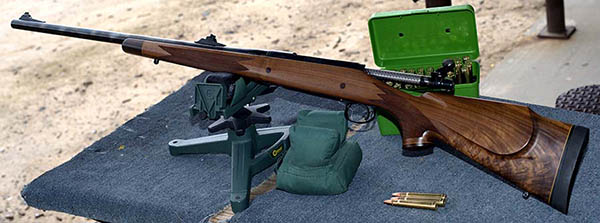
I did, and the bottom line is that I shot the tightest groups I’ve ever shot at 100 yards using iron sights (i.e., not a scope). Take a look.
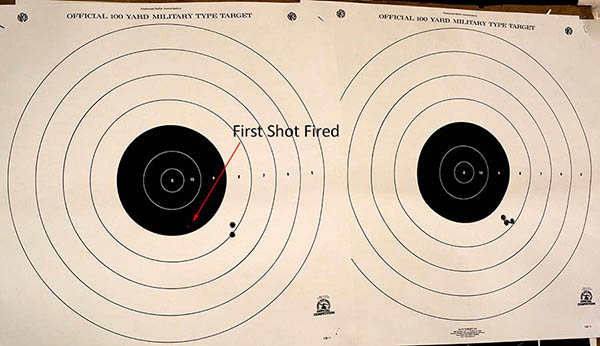
My point of aim was at 6:00 on the bullseye, and the groups I shot were worthy of a scoped rifle. I may need to adjust the rear sight to bring the group over to the left a couple of inches or so (which is a bit funny, because at 50 yards the windage seemed perfect). The elevation is perfect; the point of impact is even with the point of aim for elevation. When I shot those groups it was overcast, and that could account for the rifle printing a bit to the right. Our range is aligned such that in the morning the sun is to the left, and that makes the left side of the front site a bit brighter than the right side. Because it was overcast the day I shot the target you see above, the sunlight-induced bias wasn’t present. That could account for the groups offset to the right. I’ll wait and shoot it again when the sun’s out to see where the rifle hits.
I am enjoying this rifle more and more. It’s got it all…good looks, power, and it groups like a target grade rifle.
Check out our other Tales of the Gun stories!
Hit those popup ads!
Never miss an ExNotes blog:
The Wall
 Here at ExhaustNotes.us we are all about the motorcycle, with a smattering of gunplay and interesting adventure destinations thrown in to keep the place hopping. But what if there were no bikes, adventures or bullets? What then? Keep reading and I’ll tell you what then, Bubba.
Here at ExhaustNotes.us we are all about the motorcycle, with a smattering of gunplay and interesting adventure destinations thrown in to keep the place hopping. But what if there were no bikes, adventures or bullets? What then? Keep reading and I’ll tell you what then, Bubba.
Concrete, my friends, and the mixing of it is the solution to a lackluster moto-life. Dusty and powder soft with an aggregate backbone, believe in it and concrete will provide. Trust in it and it will repay you a thousand times. The grey dust keeps me going because lately I haven’t been riding motorcycles or watching Emma Peel on YouTube so there’s nothing to write about except the grey dust. The grey dust keeps me hoping for some far-off, much better two-wheeled days. Think of this as an ExhaustedNotes blog.
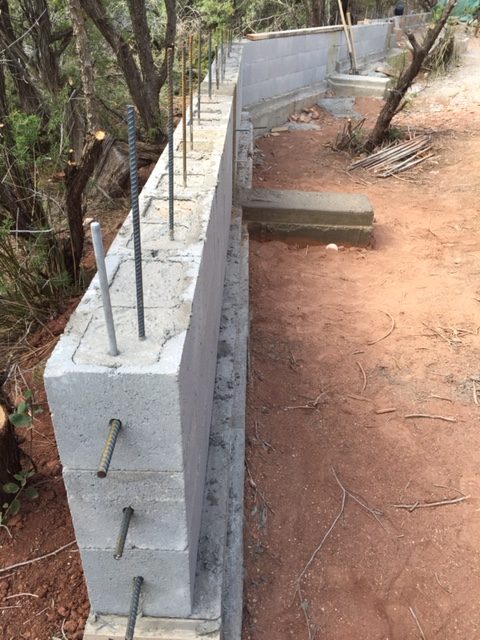 Situated in the steep-ish foothills of the Sacramento Mountains, Tinfiny Ranch is slowly bleeding into the arroyo, you know? You put down your cold, frosty beer and the next thing you know your Stella is halfway to White Sands National Monument. On the lee side of The Carriage House we’ve lost a good 18-inches of mother earth because while it doesn’t rain often in New Mexico when it does rain it comes down in buckets. This sudden influx of water tears through Tinfiny Ranch like freshly woken kittens and sweeps everything in its path down, down, down, into the arroyo and from there on to the wide, Tularosa Valley 7 miles and 1500 feet below. Claiming dominion over the land is not as easy as they make it sound.
Situated in the steep-ish foothills of the Sacramento Mountains, Tinfiny Ranch is slowly bleeding into the arroyo, you know? You put down your cold, frosty beer and the next thing you know your Stella is halfway to White Sands National Monument. On the lee side of The Carriage House we’ve lost a good 18-inches of mother earth because while it doesn’t rain often in New Mexico when it does rain it comes down in buckets. This sudden influx of water tears through Tinfiny Ranch like freshly woken kittens and sweeps everything in its path down, down, down, into the arroyo and from there on to the wide, Tularosa Valley 7 miles and 1500 feet below. Claiming dominion over the land is not as easy as they make it sound.
So I put the motorcycles away and took a cudgel to Tinfiny. I pounded, I dug, I formed and I poured. I am building a wall and Mexico has not stepped up to the plate with the promised assistance. The thing has grown to 70 feet long and varies in elevation from a foot to 4 feet high. Repetition has honed my skills: I can do 8-feet of wall every two days and the days stretch on and on. I figure I’ll stop when I run into the Pacific Ocean.
 After the wall is up the resulting divot will require filling with dirt. I have lots of dirt on Tinfiny Ranch; the conundrum is where to borrow it from without causing even more erosion. I’m hoping that leveling the back yard will provide most of the needed fill.
After the wall is up the resulting divot will require filling with dirt. I have lots of dirt on Tinfiny Ranch; the conundrum is where to borrow it from without causing even more erosion. I’m hoping that leveling the back yard will provide most of the needed fill.
I’ve made the wall porous to keep water from backing up behind it and poured L braces in an attempt to keep the wall from toppling over. The beauty of the wall is that it will work in any orientation. I’m nearly ready to start the slow process of dumping dirt and compacting it 6-inch layer by 6-inch layer until the land is even with the top of the wall. At that point the floodwaters should flow over the wall spilling into the arroyo. Unless, of course, the hill becomes so saturated that the entire wall slips into the arroyo. And I become one of those questing specters drifting the canyons wailing my banshee wail, never resting, never finding peace.

Reloading and Shooting Cast Bullets in the Mosin-Nagant Rifle
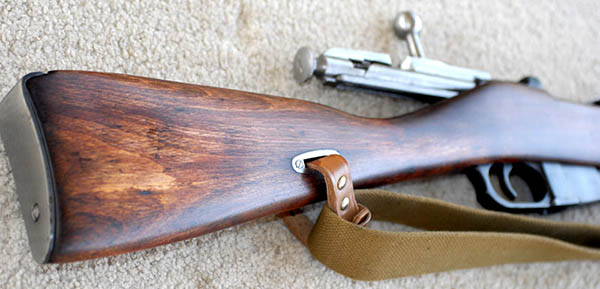
I’m a Mosin-Nagant fan, as you know from reading our prior posts on these fine old Russian warhorses. I’ve got two, one I use with jacketed bullets and one I use exclusively with cast bullets. Today’s blog focuses on reloading and using cast bullets in a Mosin.
So what’s the deal on cast bullets? If you reload, you can use either factory-produced, copper-jacketed bullets, or you can use cast bullets. Cast bullets are cast of lead, lubricated with an appropriate grease, and sometimes fitted with a gas check (a small copper cap on the back of the bullet).
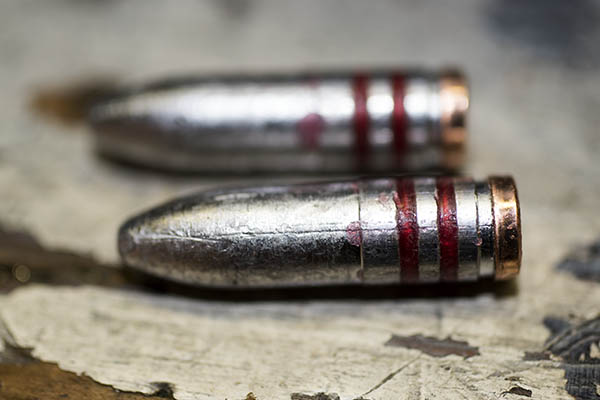
Folks who shoot cast bullets either buy the bullets or they cast them themselves. I used to cast bullets 40 years ago, but I found it easier just to buy them from folks who know what they are doing and avoid the hassles of melting lead, breathing the fumes, etc.
Cast bullets are a lot easier on both the rifle and the shooter. The softer metal (lead versus a copper jacket) is easier on the rifling and the lower velocities reduce recoil. The downsides are that the trajectory is more pronounced due to the lower velocities associated with cast bullets, and generally speaking, cast bullets are not as accurate as jacketed bullets. But that last bit sure isn’t the case here. My cast loads in the Mosin are every bit as accurate as jacketed loads, and the Mosin I use for cast bullets is another one of my all-time favorite rifles. It’s the rifle you see in the first photo of this blog, and in the photos below.
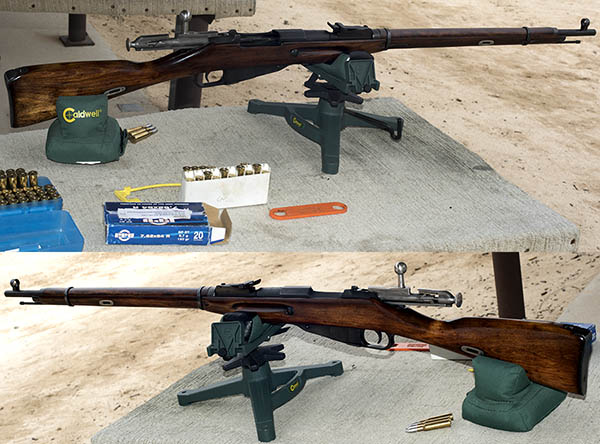
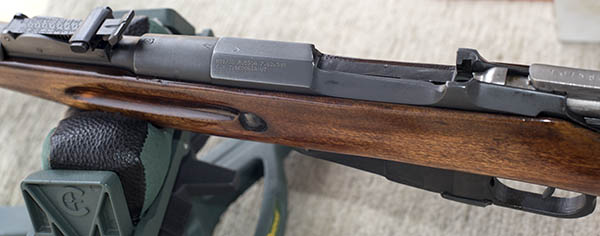
My cast bullet Mosin is just flat amazing. It regularly cloverleafs at 50 yards, and when I do my part, I’ll get groups under 2 inches at 100 yards. Yeah, I know, other folks talk about sub-minute-of-angle shooting at that distance, but we’re talking about iron sights and cast bullets here, folks, and it’s all being done with a rifle manufactured in 1935. And wow, can that 84-year-old puppy shoot…
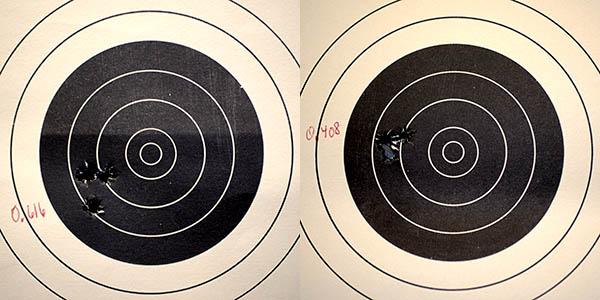
This kind of accuracy doesn’t just happen and it’s usually not attainable with factory ammunition. This is what you can get when you tailor the load to a particular rifle, and you can only do that if you reload. I developed the load used to shoot the targets you see above trying different propellants and propellant charges, different cartridge cases, and different cast bullets. The secret sauce? It’s this recipe right here…

Good buddy Gresh suggested I do a piece on reloading, and I actually had done that already in the form of a video some time ago. What you’ll see in the video below is the reloading process. When you reload a cartridge, you lube the brass, resize it to its original dimensions, prime it, flare the case mouth (to accept the cast bullet), add the propellant, and seat the bullet. With a little bit of music taken directly from Enemy at the Gates (a movie in which the Mosin-Nagant rifle was the real star), take a look at what’s involved in reloading 7.62x54R ammo with cast bullets…
Shooting cast bullets in a rifle is a lot of fun. A good reference if you want to try loading with cast bullets is the Lyman Cast Bullet Handbook (it’s the one I use). If you never tried reloading you might think about getting into it, and if you’re already reloading, you might think about giving cast bullets a go.
Check out our other Tales of the Gun stories! And, don’t forget to sign up for our automatic email updates. You might win our next quarterly adventure book giveaway!
Riding China
A couple of years ago I gave a presentation on our ride across China to one of the Horizons Unlimited gatherings. It was a 56-slide PowerPoint deal and I thought I might share it with you here. It’s big bandwidth, so bear with me as the images load, and enjoy…















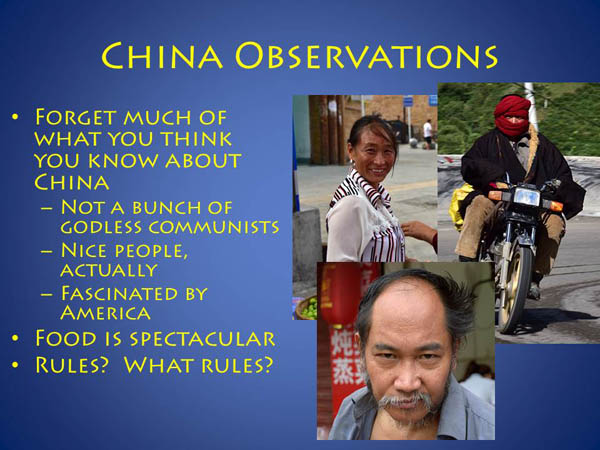
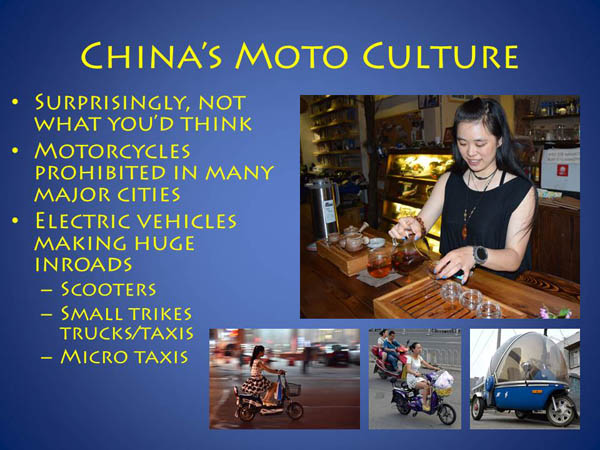
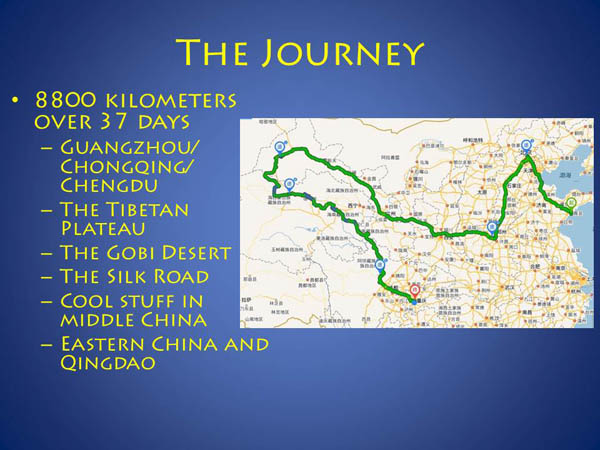
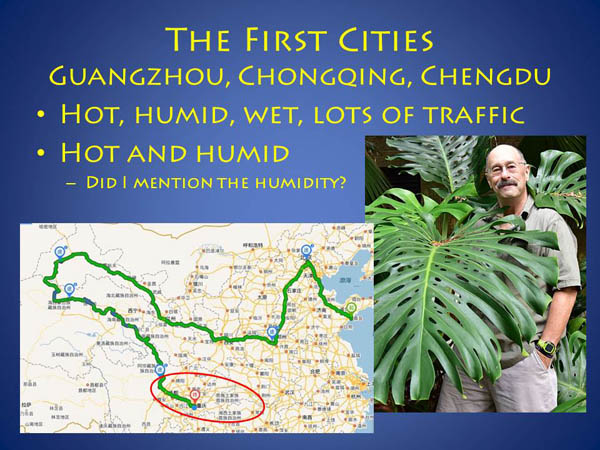


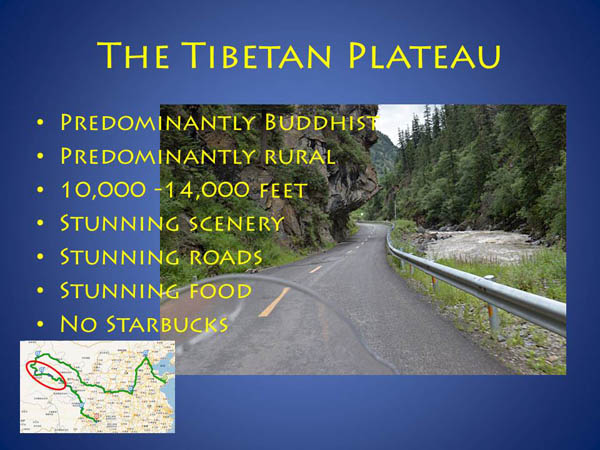
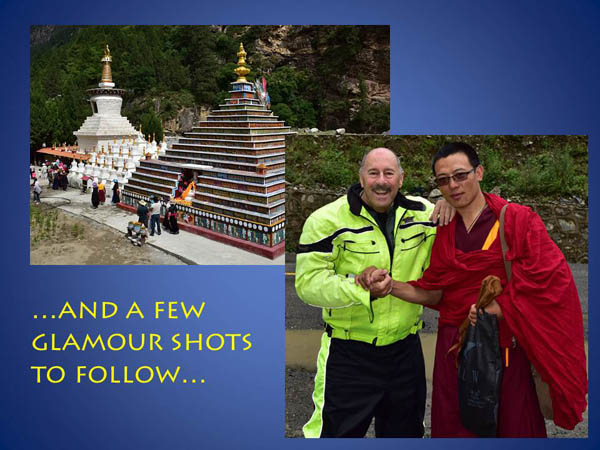


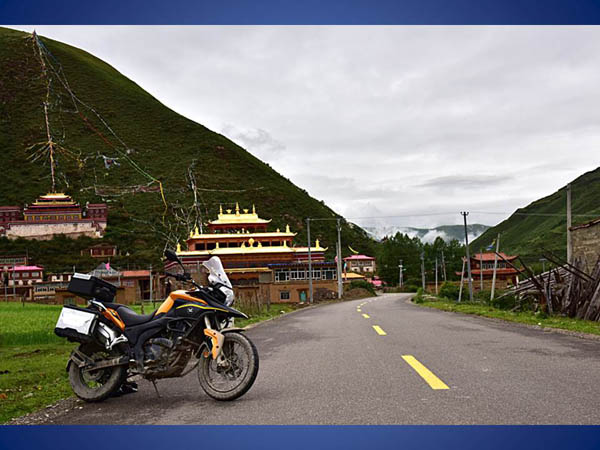

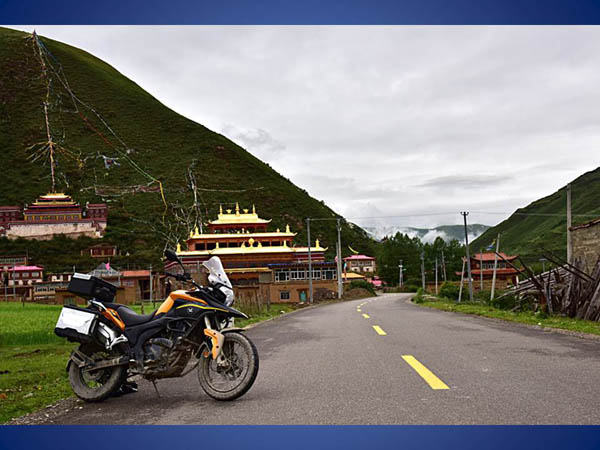
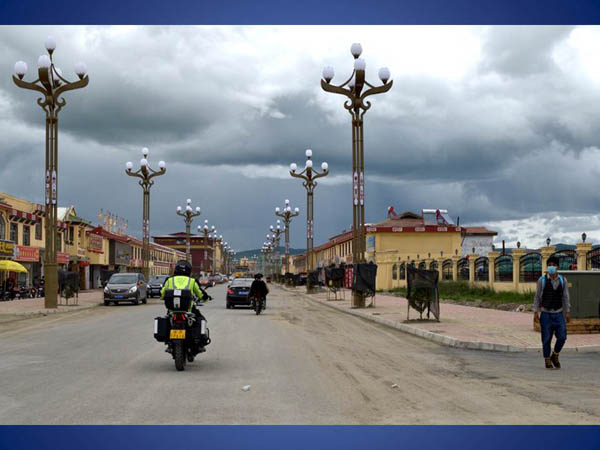



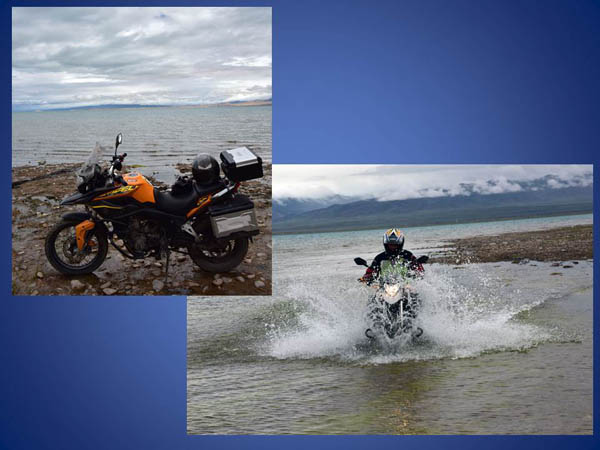
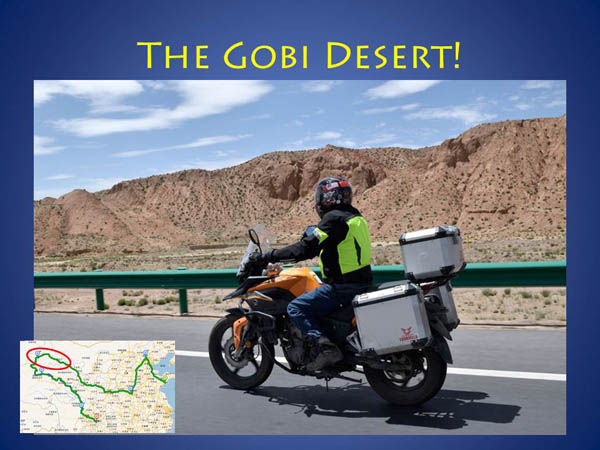
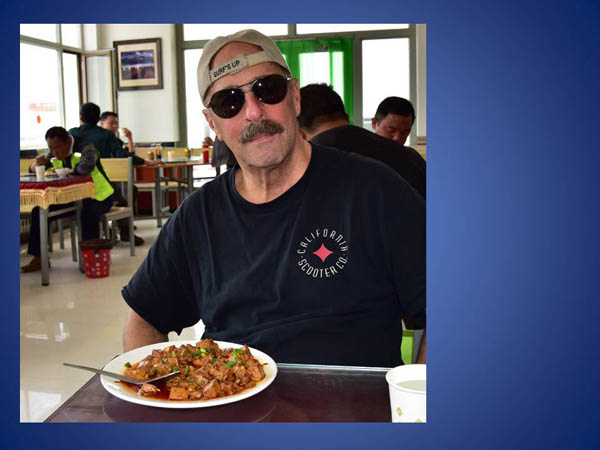
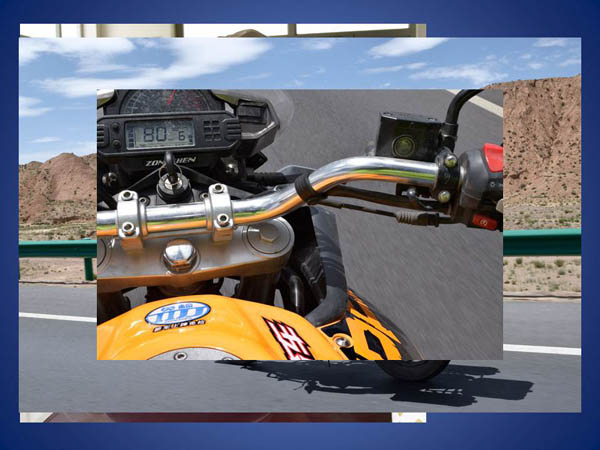
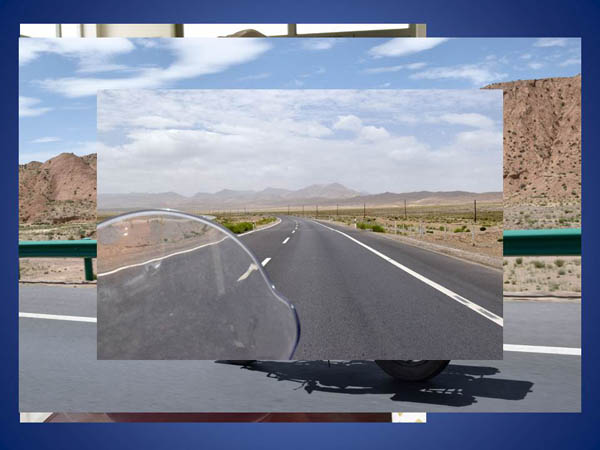
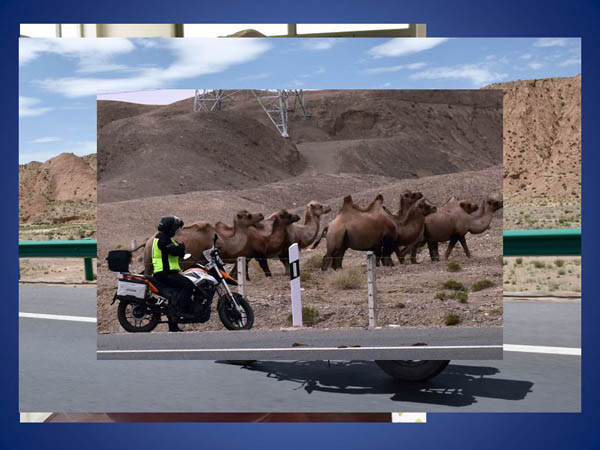


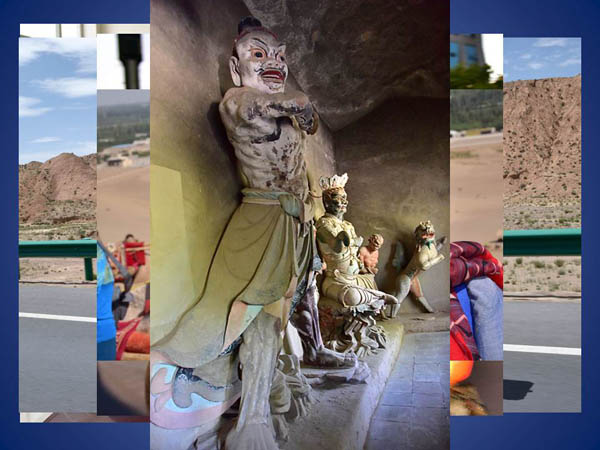
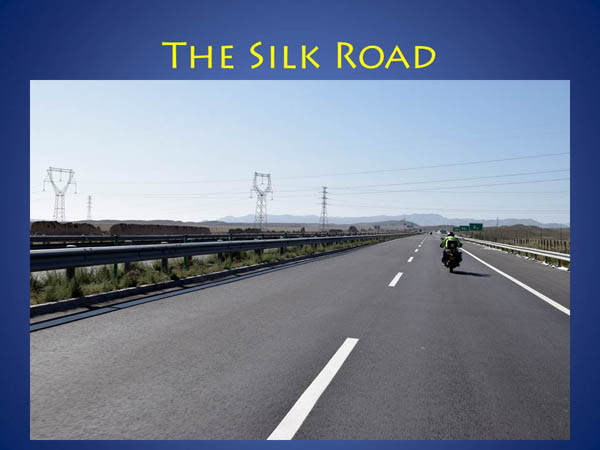

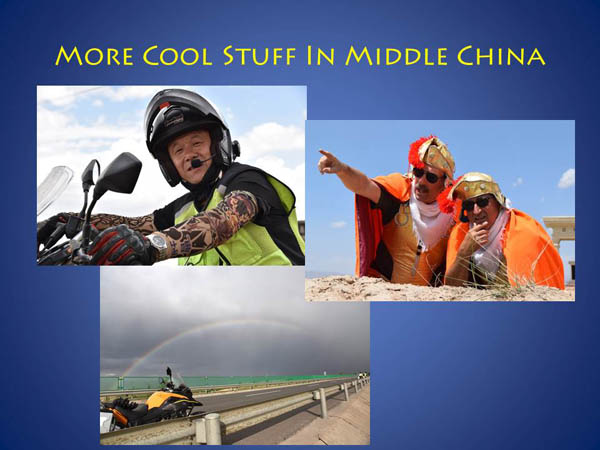
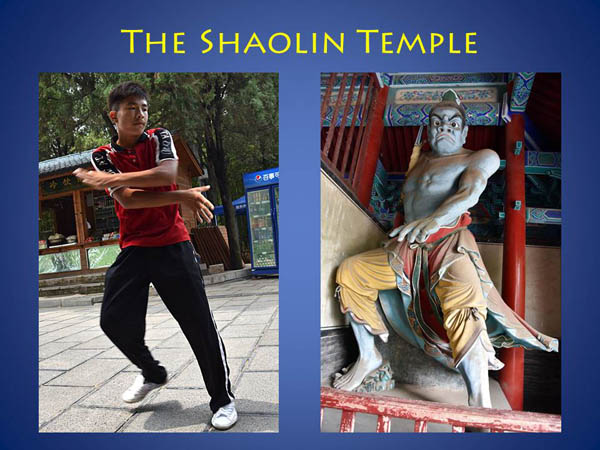
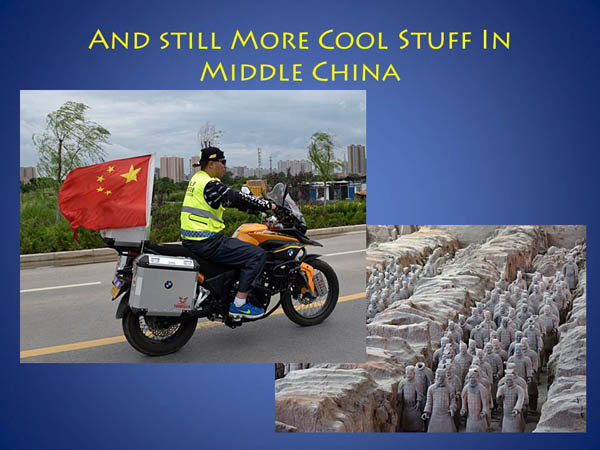

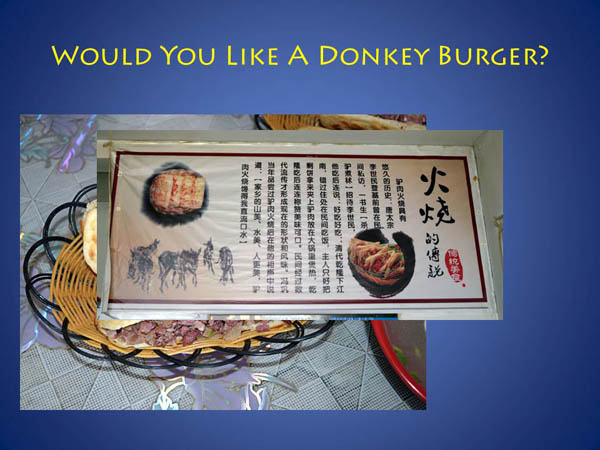


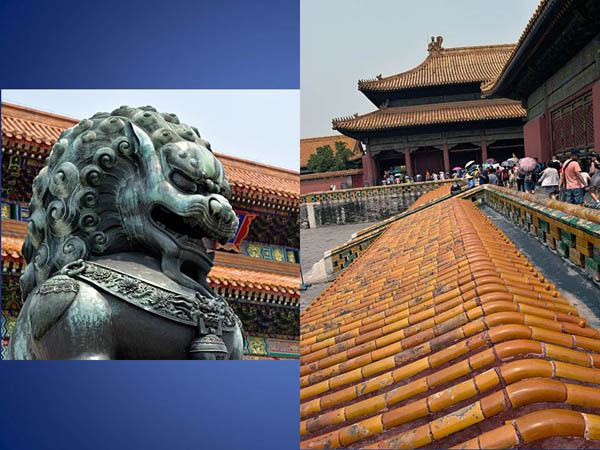
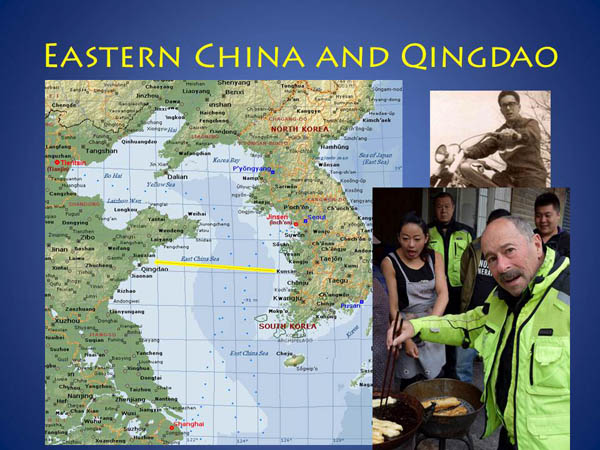

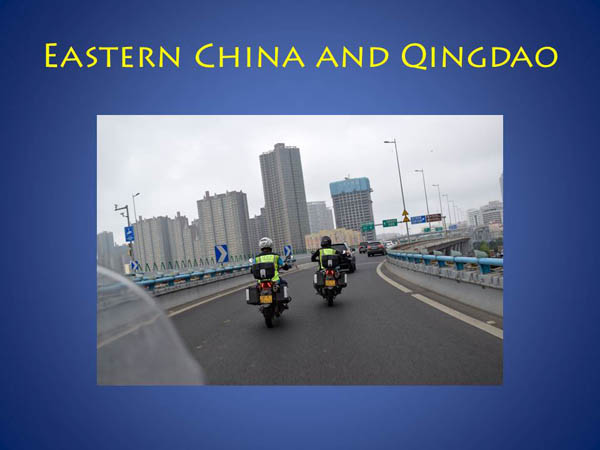


The riding was great, the friendship was even better, and the photo ops were off the charts. Both Joe Gresh and I published stories on that adventure, too. And don’t forget the book, Riding China. You can buy it here!

